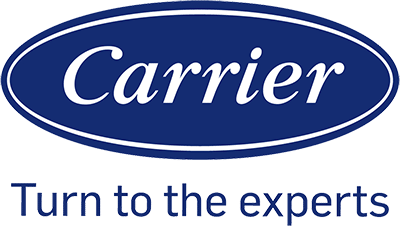Understanding Thermostat Calibration
Proper thermostat calibration ensures accurate temperature readings and optimal HVAC performance. It helps in maintaining comfort and energy efficiency in a building.

The Role of Calibration in HVAC Efficiency
Calibration is vital because an uncalibrated thermostat may display incorrect temperatures. This can lead to over-heating or over-cooling spaces.
Accurate temperature readings improve energy efficiency. This means lower energy bills and better comfort for occupants. Precise temperature control also ensures the HVAC system runs smoothly and lasts longer.
Smart thermostats often have self-calibration features that help in maintaining accuracy. Programmable thermostats may need manual calibration to stay precise.
Recognizing the Signs of Improper Calibration
Signs of poor calibration include rooms being too hot or too cold despite the thermostat setting.
Inconsistent temperature readings can indicate a problem. If the system is frequently cycling on and off, it could be due to incorrect thermostat readings. Checking the thermostat sensors is necessary to identify calibration issues.
Common signs:
- Rooms feel too warm or cold
- System cycles on and off too often
- Temperature readings don’t match actual room temperature
Comparing Thermostat Types for Optimal Performance
Different thermostat types require different calibration techniques. Smart thermostats often have built-in features to reduce the need for manual calibration.
Programmable thermostats are reliable but may require more frequent calibration checks. They offer customizable settings but rely on accurate calibration to perform well.
A table comparing the two types:
| Feature | Smart Thermostat | Programmable Thermostat |
|---|---|---|
| Self-Calibration | Yes | No |
| Manual Calibration | Rarely needed | Occasionally needed |
| User Control | High | Moderate |
| Energy Efficiency | Very High | High |
Essential Calibration Techniques
Regular calibration ensures that thermostats provide accurate temperature control. One technique involves using a reliable thermometer to check the actual room temperature and adjust the thermostat settings accordingly.
Cleaning the thermostat is also important. Dust and debris can affect thermostat sensors and cause inaccurate readings.
Steps for calibration:
- Place an accurate thermometer near the thermostat.
- Compare the reading to the thermostat display.
- Adjust the thermostat’s settings to match the thermometer.
- Check all other settings like time and date if using a programmable model.
Fine-tuning minor adjustments frequently ensures reliable and precise temperature control.
The Benefits of Professional Thermostat Calibration
Professional thermostat calibration offers accurate temperature readings and helps in controlling energy costs while ensuring comfort and energy efficiency. The subtopics below explore how professional help can prevent high energy bills and costly repairs.

Advantages of Expert HVAC System Tuning
Professional assistance in calibrating your thermostat ensures accurate temperature readings, making your HVAC system more reliable. Expert tuning helps maintain the right balance between heating and cooling, reducing inconsistent temperatures and preventing inefficient heating or cooling. This targeted approach can lead to significant energy savings and increased comfort within your home.
Navigating Potential HVAC System Issues
Inconsistent temperatures and inefficient heating or cooling are common issues in poorly maintained systems. Professional HVAC technicians can diagnose and address these problems during routine maintenance. Proper calibration and regular fittings can help identify potential breakdowns early, preventing costly repairs and extending the system’s lifespan.
Cost Implications of Regular Thermostat Maintenance
Regular thermostat calibration can lead to decreased energy costs and long-term savings. By keeping the HVAC system in peak condition, homeowners can avoid high energy bills. Simple maintenance also helps in avoiding expensive repairs, making it a cost-effective solution in the long run. Energy efficiency translates to both immediate and future cost benefits.
Professional Calibration vs. DIY Approaches
While DIY approaches might seem attractive, they often lack the precision required for accurate results. Professional HVAC technicians bring expertise that ensures proper calibration, leading to better performance of the HVAC system. Trusting professionals highlights the benefits of accurate readings and efficient energy use, setting a clear difference between DIY efforts and expert intervention.
Maintaining Your Thermostat for Reliability and Performance
Proper thermostat maintenance ensures accurate readings and boosts HVAC system performance. Here are specific steps to maintain your thermostat’s reliability and address common issues.
Routine Steps for Thermostat Upkeep
Regular cleaning is crucial. Dust and dirt can affect the thermostat’s efficiency. Use a soft brush or canned air to clean the exterior and the interior components.
Check the thermostat’s location. It should be away from direct sunlight, windows, and vents. This prevents inaccurate temperature readings.
Mechanical adjustments can be necessary for older models. Make sure the thermostat is level and firmly attached to the wall. Replace batteries at least once a year, even if they still seem to work.
Identifying and Addressing Temperature Fluctuations
Temperature fluctuations can signal a problem. Signs like frequent cycling or temperature swings can indicate issues.
First, verify the settings and ensure the thermostat is set to the correct mode. Inspect the placement; it should not be in places that experience frequent temperature changes, like near kitchens or bathrooms.
Smart thermostats can help. They adjust settings automatically and provide alerts when something seems off. For persistent problems, consult the manual or contact support.
When to Seek Professional AC System Services
Sometimes, DIY tasks aren’t enough. If inaccurate readings persist, it may be time to get professional help. Frequent cycling and unexplained changes can indicate deeper problems with the HVAC system.
Professionals can perform a detailed mechanical adjustment and calibration. They have tools to provide precise temperature accuracy and can spot signs of misalignment.
AC repair services are recommended if the thermostat issues continue. Regular professional checks help in maintaining the overall HVAC system performance. Seek expert assistance to ensure reliability and efficiency.




